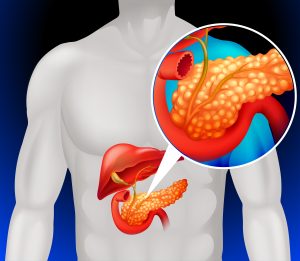6 Body Organs You Can Donate While Alive – Are you aware that you possess the power to save lives by donating certain organs while still alive? Organ transplantation is a miraculous medical procedure that brings hope and renewed vitality to countless individuals suffering from organ failure.
While most organ donations are done posthumously, it is lesser known that some organs can be donated while a person is still alive, providing a chance for immediate intervention and significantly improving a recipient’s quality of life.
In this comprehensive article, we will explore the six body organs you can donate while alive, shedding light on the profound impact this selfless act can have on the lives of others.
From kidneys to portions of the liver and lungs, these organs hold the potential to grant the gift of life to those in desperate need.
The 6 Body Organs You Can Donate While Alive
1. Kidneys:

- Did you know that living with just one kidney is completely safe and healthy?
- Donating a kidney not only saves a life but also significantly improves the quality of life for the recipient.
- Kidney transplantation is the most common living organ transplant procedure worldwide.
2. Liver:

- The liver possesses an exceptional regenerative capacity, allowing a portion of it to be donated while ensuring the remaining liver functions normally in both the donor and recipient.
- Living liver donation offers hope to individuals suffering from end-stage liver disease, who would otherwise rely solely on deceased donor organs.
3. Lung:

- Partial lung donations have revolutionized transplantation, offering a viable option for those awaiting lung transplants.
- Due to the immense scarcity of lung donations, living lung transplants provide a lifeline for patients in dire circumstances.
READ ALSO: We Came To Beat Ghana; We’re Not Here For Holidays – Madagascar Coach Romuald Rakotondrabe
4. Intestine:

- While intestinal transplantations are less common, they can be life-saving for individuals with intestinal failure.
- Living intestine donations provide significant advantages, including better graft survival rates and improved quality of life for the recipient.
5. Pancreas:

- Pancreatic donations from living donors are primarily done in combination with kidney transplants, known as simultaneous pancreas-kidney transplants.
- This approach offers a transformative solution for individuals suffering from both diabetes and kidney failure.
6. Bone Marrow:
- Bone marrow transplants are commonly performed to treat various forms of cancer, blood disorders, and immune system disorders.
- By donating bone marrow, you contribute to the possibility of curing life-threatening conditions and giving hope to those without many treatment alternatives.
Frequently Asked Questions (FAQs)
1. Can anyone donate these organs while alive?
Not everyone may be eligible to donate certain organs, as stringent criteria and medical compatibility are considered for the safety of both the donor and recipient. Detailed medical evaluations are necessary to determine suitability for live organ donation.
2. Are there any risks associated with live organ donation?
Live organ donation does carry some risks, as any surgical procedure would. However, medical advancements and thorough screening processes minimize these risks to ensure donor safety.
3. Can I still live a healthy life after donating an organ?
Yes, in most cases, living with one kidney or a partial organ has no adverse effects on a donor’s overall health or life expectancy. Extensive medical evaluations are conducted to confirm a donor’s ability to lead a normal life post-surgery.
The incredible act of donating organs while alive presents an invaluable opportunity to positively impact the lives of individuals suffering from organ failure.
Remember, the six body organs you can donate while alive – kidneys, liver, lungs, intestine, pancreas, and bone marrow – hold the power to change lives and create lasting legacies.
The choice to donate is yours, but the impact can resonate with recipients and their loved ones forever.
